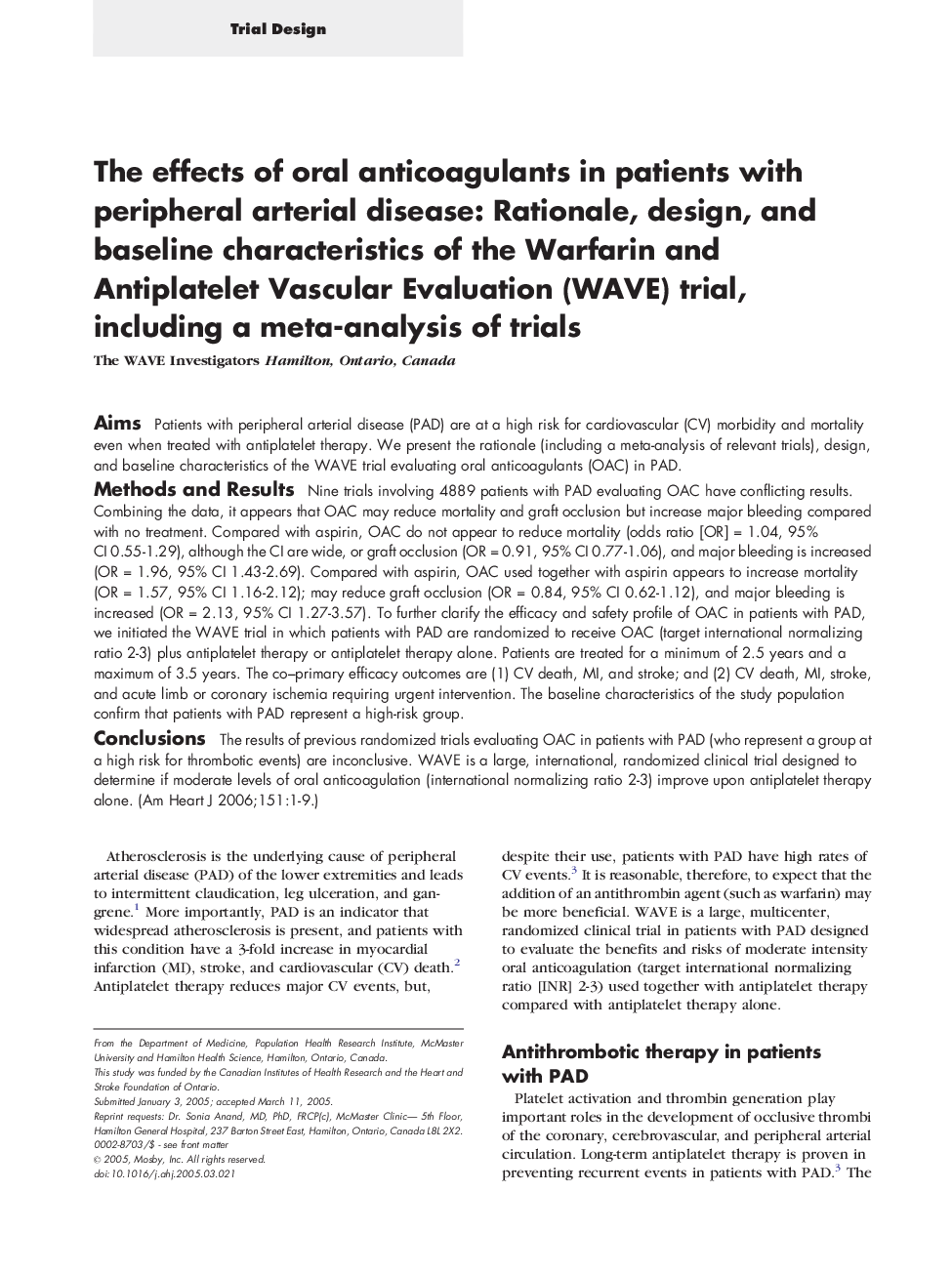| Article ID | Journal | Published Year | Pages | File Type |
|---|---|---|---|---|
| 2851410 | American Heart Journal | 2006 | 9 Pages |
AimsPatients with peripheral arterial disease (PAD) are at a high risk for cardiovascular (CV) morbidity and mortality even when treated with antiplatelet therapy. We present the rationale (including a meta-analysis of relevant trials), design, and baseline characteristics of the WAVE trial evaluating oral anticoagulants (OAC) in PAD.Methods and ResultsNine trials involving 4889 patients with PAD evaluating OAC have conflicting results. Combining the data, it appears that OAC may reduce mortality and graft occlusion but increase major bleeding compared with no treatment. Compared with aspirin, OAC do not appear to reduce mortality (odds ratio [OR] = 1.04, 95% CI 0.55-1.29), although the CI are wide, or graft occlusion (OR = 0.91, 95% CI 0.77-1.06), and major bleeding is increased (OR = 1.96, 95% CI 1.43-2.69). Compared with aspirin, OAC used together with aspirin appears to increase mortality (OR = 1.57, 95% CI 1.16-2.12); may reduce graft occlusion (OR = 0.84, 95% CI 0.62-1.12), and major bleeding is increased (OR = 2.13, 95% CI 1.27-3.57). To further clarify the efficacy and safety profile of OAC in patients with PAD, we initiated the WAVE trial in which patients with PAD are randomized to receive OAC (target international normalizing ratio 2-3) plus antiplatelet therapy or antiplatelet therapy alone. Patients are treated for a minimum of 2.5 years and a maximum of 3.5 years. The co–primary efficacy outcomes are (1) CV death, MI, and stroke; and (2) CV death, MI, stroke, and acute limb or coronary ischemia requiring urgent intervention. The baseline characteristics of the study population confirm that patients with PAD represent a high-risk group.ConclusionsThe results of previous randomized trials evaluating OAC in patients with PAD (who represent a group at a high risk for thrombotic events) are inconclusive. WAVE is a large, international, randomized clinical trial designed to determine if moderate levels of oral anticoagulation (international normalizing ratio 2-3) improve upon antiplatelet therapy alone.
